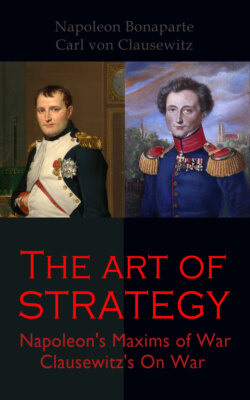Читать книгу The Art of Strategy: Napoleon's Maxims of War + Clausewitz's On War - Carl von Clausewitz - Страница 48
На сайте Литреса книга снята с продажи.
ОглавлениеMAXIM XLIII.
Table of Contents
Those who proscribe lines of circumvallation, and all the assistance which the science of the engineer can afford, deprive themselves gratuitously of an auxiliary which is never injurious, almost always useful, and often indispensable. It must be admitted, at the same time, that the principles of field-fortification require improvement. This important branch of the art of war has made no progress since the time of the ancients. It is even inferior at this day to what it was two thousand years ago. Engineer officers should be encouraged in bringing this branch of their art to perfection, and in placing it upon a level with the rest.
NOTE.
“If we are inferior in numbers,” says Marshal Saxe, “entrenchments are of no use, for the enemy will bring all his forces to bear upon particular points. If we are of equal strength they are unnecessary also. If we are superior, we do not want them. Then why give ourselves the trouble to entrench?” Notwithstanding this opinion of the inutility of entrenchments, Marshal Saxe often had recourse to them.
In 1797, Generals Provéra and Hohenzollern having presented themselves before Mantua (where Marshal Wurmser was shut up), for the purpose of raising the siege, they were stopped by the lines of contravallation of St. George. This slight obstacle sufficed to afford Napoleon time to arrive from Rivoli and defeat their enterprise. It was in consequence of neglecting to entrench themselves that the French had been obliged to raise the siege in the preceding campaign.
